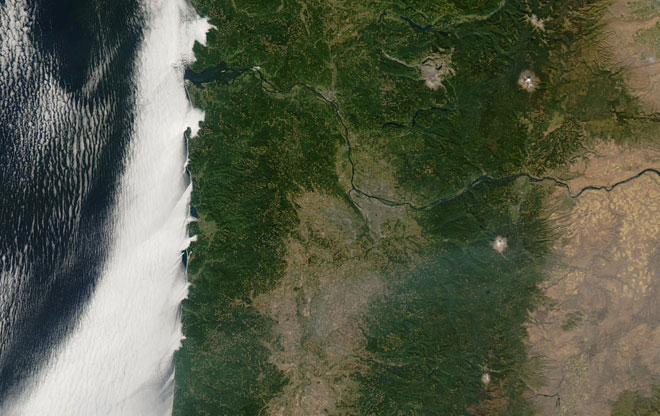
Our Geography
Portland is perfectly set at the confluence of coastal and high desert air that blends local weather patterns, providing a comfortable and temperate climate year-round. If one was to begin at the beach and travel to the high desert (left to right above), the experience would cover 165 miles and illustrate the environmental diversity of our region.
Image: Google Earth 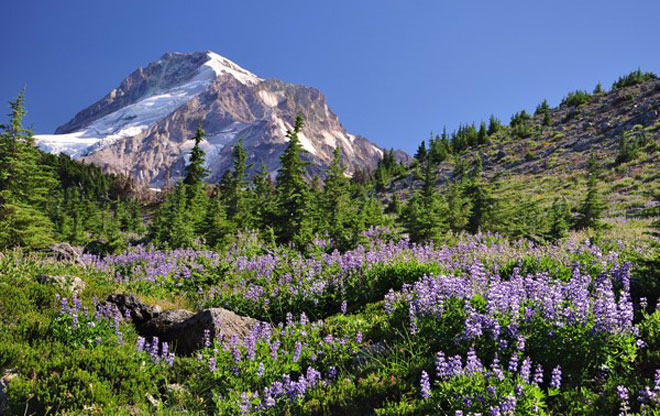
Mount Hood
Just east of Portland is the Pacific Cascade, part of the "Ring of Fire" that defines the rim of the Pacific Ocean. Mount Hood stands at 11,249 feet above sea level. It shows the power and majesty of this 1,300-mile-long active volcanic range, which stretches from British Columbia, Canada, to Northern California. Eight officially designated wilderness areas in Mt. Hood National Forest total more than 310,000 acres. Retaining our tradition from early pioneers, this area provides incredible recreational opportunities.
Image: Cheryl Hill, Wild Oregon 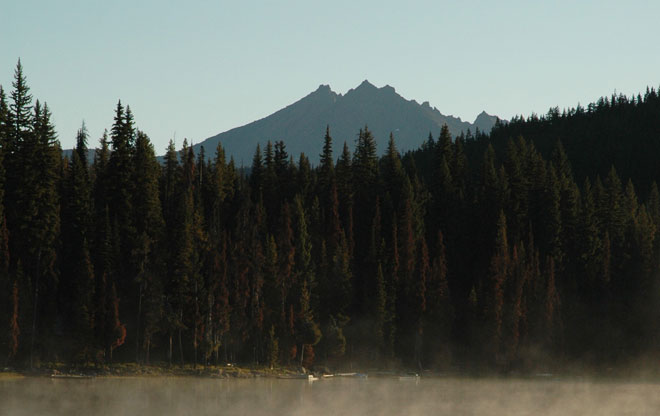
Cascade Mountains
The nearby Cascade mountains feature thousands of lakes that can be reached by the Pacific Crest Trail and numerous feeder trails.
Image: Lloyd Lindley 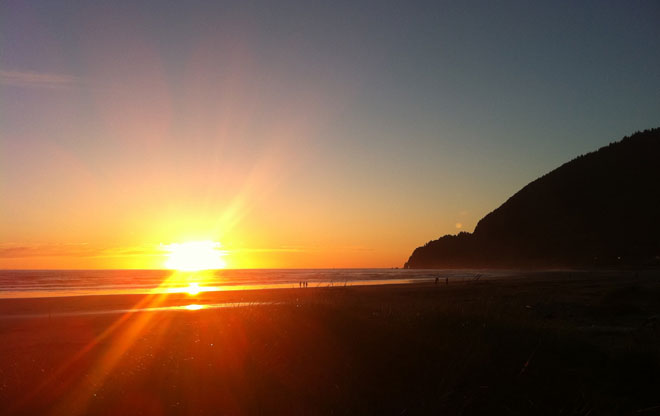
Pacific Ocean
West of Portland is the Pacific Ocean, a vast ecosystem. Between long, white-sand beaches are capes and sculpted sea stacks, arches, and caves accessed by an extensive trail system. The Oregon Coast Trails system winds 382 miles along beaches and headlands with the first 45 miles stretching from the mouth of the Columbia River to Cape Falcon just below Neahkahnie Mountain (above) and Oswald West State Park. Oregon's landscape architects have continually played a significant role in the preservation, restoration, and expansion of our state park system.
Image: Lloyd Lindley 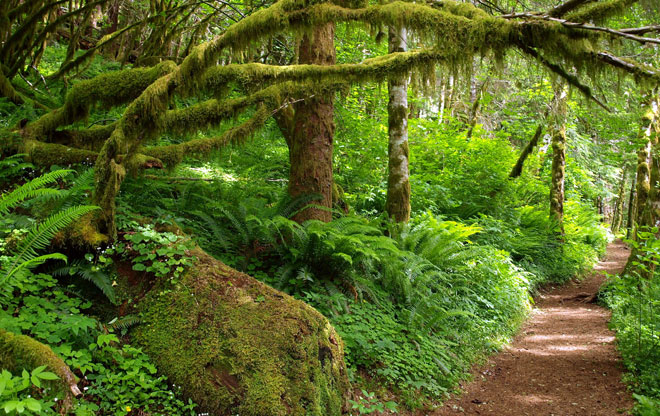
Pacific Coast Range
Also west of the city is the Pacific coast range. According to the Oregon department of geology, this heavily forested mountain range was formed 50 million years ago from a chain of volcanic islands that collided with the North American continent. Extensive national and state forest lands provide an opportunity to experience this rich and diverse stretch of highlands that define the western edges of Portland's metropolitan region.
Image: Portland Hikers Field Guide 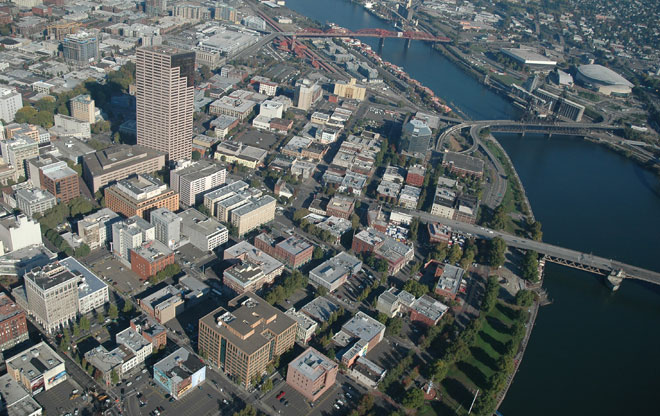
Portland Is at the Center of Environmental Diversity
The City of Portland, plated on the banks of the Willamette River near the confluence of the Columbia River to the north, was incorporated in 1849. The Pacific Ocean lies 80 miles to the west, the Cascade Mountains and Columbia Gorge are 16 miles to the east, with Seattle 173 miles north and San Francisco 635 miles south. Portland enjoys the rich environmental diversity at the center of a cross section cut from the Pacific Coast Range to the Cascade Mountains and Oregon’s high desert beyond.
Image: Lloyd Lindley 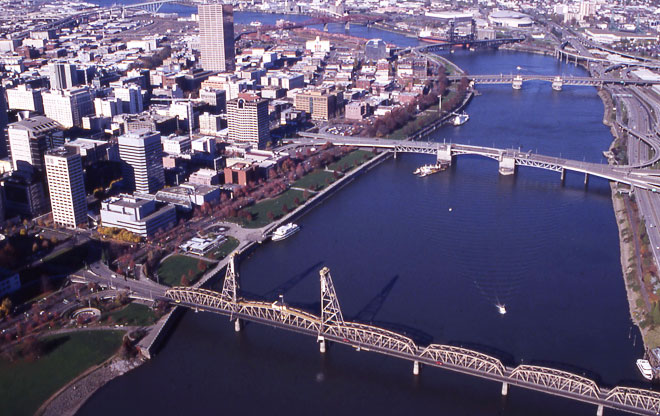
River City
Portland is fondly known as River City or Bridge City, depending on where you are standing. The Willamette River connects Portland, creating an inner-city circulation system, while also integrating us with destinations throughout the metropolitan region. The river is the seam that binds the city together, contributing to the city's livability and sustainability.
Image: Lloyd Lindley 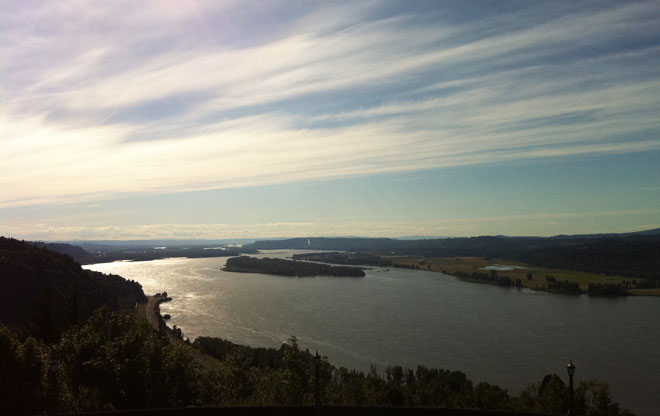
The Mighty Columbia River
Navigation along Portland's other major river, the Columbia River, stretches from the Pacific Ocean to Idaho. The mighty Columbia is the fourth-largest in the U.S. and has the greatest volume of any North American river flowing to the Pacific Ocean. The Columbia is 1,243 miles long and drains into a basin the size of France. It's only interrupted by 14 hydroelectric dams that supply power to the western U.S. with inexpensive and renewable energy. The river has the potential to supply one-third of the nation's electric power.
Image: Lloyd Lindley 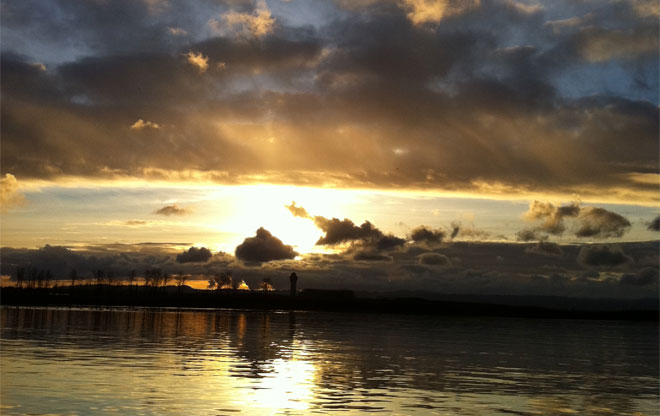
Columbia River and Its Tributaries
As with Portland's early pioneers, the Columbia and its tributaries continue to attract modern-day adventurers and people seeking a quiet spot on the water. Tour groups operate trips from various locations up and down the river providing another perspective of the diversity of Oregon and Portland's ecosystem.
Image: Lloyd Lindley 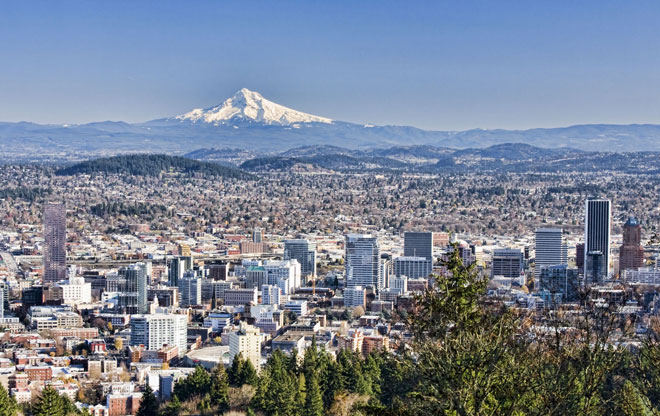
Portland and Sustainability
In Portland, sustainability is rooted in many layers, reaching back to the last century when the University of Oregon’s Schools of Landscape Architecture, Architecture, and Planning conducted research in renewable energy, land-use planning, stormwater management, passive solar design, and resource conservation. The State of Oregon, under the leadership of Governor Tom McCall, legislated compact growth and state-wide land-use planning under Senate Bill 100. These initiatives pointed to our destiny.
Image: LLoyd Lindley 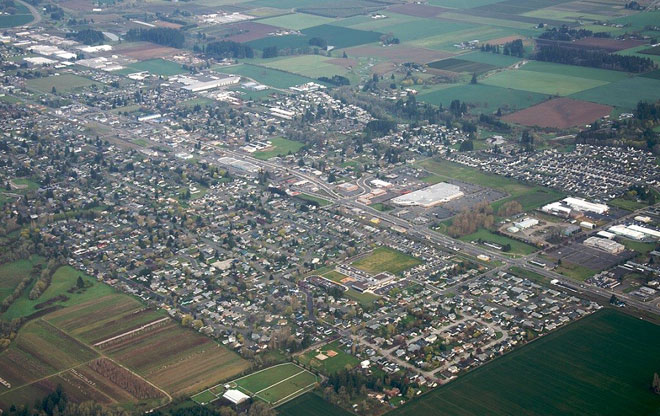
The Urban Growth Boundary
In 1973, Oregon became the first state to establish an urban growth boundary. Governor Tom McCall, environmentalists, and farmers persuaded the legislature to pass Senate Bill 100, protecting our natural beauty from sprawl. Every community then created a long-term plan to manage growth. Portland’s boundary was adopted in 1979. The boundary enabled the evolution of a smart, multi-layered system of energy production, transportation, economic development, and resource management. Portland continues to add layers to its sustainable systems.
Image: Sam Beebe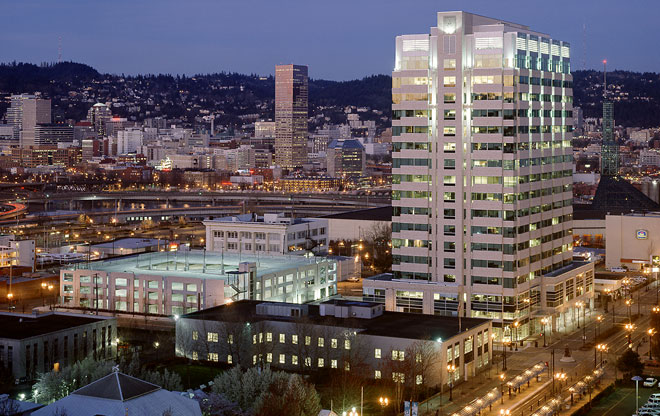
The Image of the City
The Downtown Plan adopted in 1971 not only led to a bold urban revival, but also outlined design guidelines and formed a Design Commission of citizen design professionals and developers to guide the character, form, and quality of new development in what is now Central City. Mayor Vera Katz pressed for Portland to become a "design center." She charged the Portland Design Commission to "raise the bar." Portland owes its human scale, walkability, quality materials, and sense of place to the design review process and the many volunteer reviewers.
Image: Ashforth Pacific 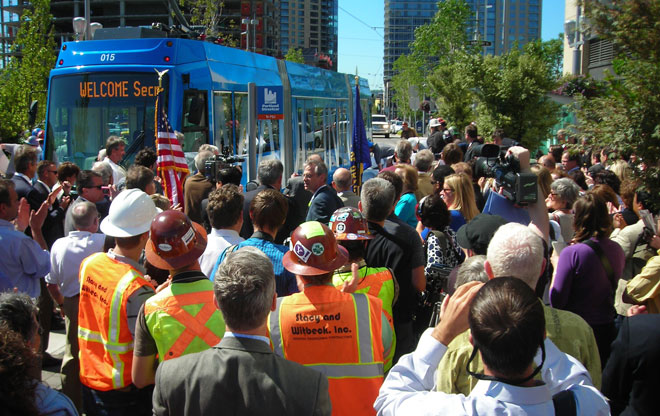
Population
The 2010 census pegs Portland’s population at 583,000. A total of 1,789,000 live in Oregon and 2,226,000 in the broader metropolitan region, which also includes the city of Vancouver in Washington state.
Image: Lloyd Lindley 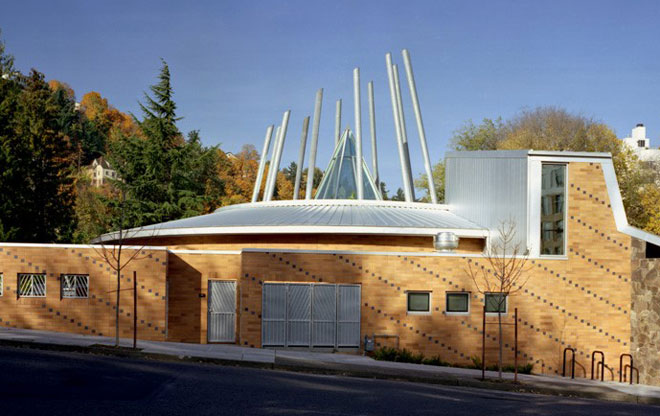
Honoring Our Native American Community
The Native American population in Portland is currently around 1 percent. We are sensitive to our rich diversity and respect every kind of person. To commemorate our diversity, a new Native American Student and Community Center at Portland State University (seen above) was designed by architect Don Stastny; David Sloan of Navajo heritage, and landscape designer Brian McCormack of Nez Perce heritage.
Image: StastneyBrun Architects for Portland State University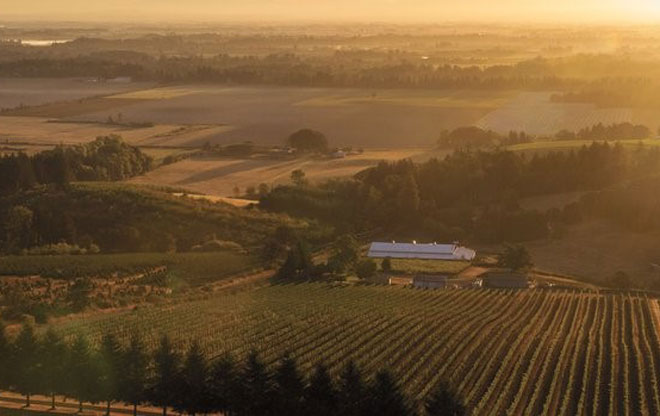
Farm to Table
The metropolitan region's urban growth boundary means the short distance from "farm to table" is a part of our culture. Access to farms, orchards, and vineyards is within relatively easy reach from the city, in all directions. Our nearby agricultural regions provide the resources for the micro brews, delicious wines, spirits, farmers markets, restaurants, and home kitchens that make our lives healthy and locally sustainable.
Image: Andrea Johnson Photography .jpg)
Tree and Plant Nurseries
The urban growth boundary has also enabled the creation of one of the nation's most extensive tree and plant nursery regions. State gross sales in 2010 were $676 million from 1,800 operations that employ 20,600 full and part-time people on 54,000 acres. Approximately 75 percent of all nursery and greenhouse stock grown in Oregon is sold out of state.
Image: Lauren Lucht, Northwest Transplants